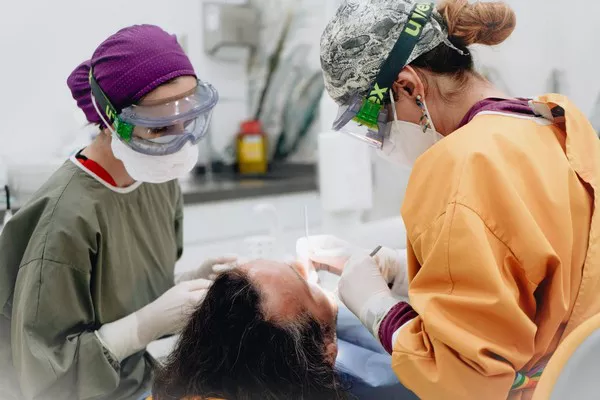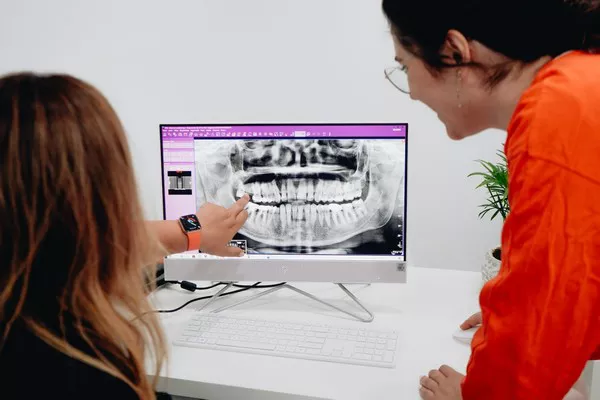Periodontal disease is a common and serious oral health concern affecting millions of people worldwide. It is an inflammatory condition that affects the gums, bone, and other supporting tissues surrounding the teeth. If left untreated, it can lead to tooth loss and systemic health problems such as cardiovascular disease, diabetes, and respiratory diseases.
The good news is that periodontal disease is treatable, especially when detected early. In this article, we will discuss in detail the various treatment options available for managing periodontal disease.
Non-Surgical Treatment
Non-surgical treatment is typically the first line of defense against periodontal disease. Its goal is to remove the buildup of plaque and calculus (tartar) from the teeth and gums and reduce the inflammation. The following are some non-surgical treatment options used for managing periodontal disease:
a. Scaling and Root Planing
Scaling and root planing is a deep cleaning procedure performed by a dental hygienist or dentist. It involves removing the plaque and tartar from above and below the gum line, followed by smoothing out rough spots on the roots of the teeth. This procedure helps to eliminate bacteria and prevent further buildup of plaque and tartar.
b. Antibiotics
Antibiotics may be prescribed in conjunction with scaling and root planing to help control the bacterial infection. They can be taken orally or applied directly to the affected area through topical antibiotics.
c. Laser Therapy
Laser therapy has been shown to be effective in killing bacteria and promoting healing in periodontal pockets. It involves using a laser to remove infected tissue and bacteria from the gums and seal off the pockets to prevent further infection.
Surgical Treatment
If non-surgical treatment does not effectively manage periodontal disease, surgical intervention may be necessary. The following are some surgical treatment options for periodontal disease:
a. Pocket Reduction Surgery
Pocket reduction surgery involves folding back the gum tissue and removing the bacteria and damaged tissue from the pockets. The gum tissue is then secured back in place, which helps to reduce the depth of the pockets and prevent further bacterial growth.
b. Bone Grafts
Bone grafts are used to help regenerate bone that has been lost due to periodontal disease. This surgical procedure involves taking bone from another part of the body or using synthetic bone to rebuild the lost bone.
c. Soft Tissue Grafts
Soft tissue grafts are used to treat gum recession resulting from periodontal disease. The procedure involves taking tissue from another part of the mouth or using donor tissue to cover exposed tooth roots and improve the appearance of the gums.
Maintenance Therapy
Once periodontal disease has been successfully treated, it is essential to maintain good oral hygiene habits to prevent recurrence. Maintenance therapy may include regular dental check-ups, frequent cleanings, and ongoing periodontal maintenance procedures.
Good oral hygiene practices such as brushing twice daily with fluoride toothpaste, flossing, and using an antiseptic mouthwash can also help prevent the occurrence of periodontal disease.
Can periodontal disease be cured?
While periodontal disease cannot be completely cured, it can be effectively managed and controlled with appropriate treatment and good oral hygiene practices. The goal of periodontal treatment is to stop the progression of the disease and prevent further damage to the teeth and gums.
Non-surgical treatments such as scaling and root planing, antibiotic therapy, and laser therapy can effectively control mild to moderate cases of periodontal disease. In severe cases, surgical intervention may be necessary.
It is important to note that even after successful treatment, periodontal disease can recur if proper oral hygiene habits are not maintained, and regular dental check-ups and cleanings are not followed. Therefore, it is essential to follow a consistent oral hygiene routine and attend regular dental appointments to maintain good oral health and prevent the recurrence of periodontal disease.
In summary, while periodontal disease cannot be completely cured, it can be effectively managed and controlled with appropriate treatment and maintenance. With proper care and attention, individuals with periodontal disease can maintain their oral health and preserve their teeth for a lifetime.
In conclusion,
periodontal disease is a serious condition that requires prompt treatment to prevent tooth loss and systemic health problems. The treatment options available for managing periodontal disease vary depending on the severity of the condition, and non-surgical treatment is typically the first line of defense.
If non-surgical treatments are not effective, surgical intervention may be necessary to manage the condition. Once periodontal disease has been successfully treated, it is essential to maintain good oral hygiene practices to prevent recurrence.
Regular visits to a dentist and hygienist are critical to maintaining oral health and preventing the progression of periodontal disease. With proper care and treatment, periodontal disease can be managed effectively, and teeth can be preserved for a lifetime of healthy smiles.
Related Topics:































